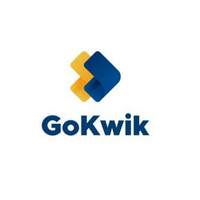
GoKwik
View Brand PublisherData helped bust of lot of myths: D2C brands on data-driven decision making
In a session themed ‘Data-driven decision making’ powered by GoKwik at the recently-concluded Brand Residency 2022, panelists deliberated on how they are leveraging data to stay connected to their customers.
We live in a world surrounded by data. While the ideas behind data and data-driven decision making aren’t new, what’s becoming more commonplace is how businesses are using this data. As industries evolve due to rapid changes, businesses need to leverage data to crunch figures, evaluate patterns, get insights, and make responsible judgments faster.
In a session themed ‘Data-driven decision making’ powered by at the recently-concluded YourStory’s Brand Residency 2022 in Delhi, panelists deliberated on how they are leveraging data to stay connected to their customers.
Speaking of how data has helped the brand make informed decisions, Shivani Poddar, Co-founder and CEO at explained how the company was initially heavily focussed on metros and mini-metros because they felt that’s where their products would find their target market. However, to their surprise, when they began looking at data from a pincode perspective, they realised that Patna was the highest selling location for their brand. Based on this critical data, they started their first format store in the Tier-II city, which continues to be their highest selling store today. “As a founder, I would have never imagined Patna to be a place where we would be selling a lot. But that quick data analysis helped bust a lot of myths,” she says.
Nodding in agreement with Shivani, Soumya Kant, Co-founder at said that 60-65 percent of their sales comes from Tier II and Tier III cities and beyond. So, they are heavily focussed on cities like Haridwar, Dehradun and Moradabad as data helped them realise that’s where their core market lies and that’s where the best conversions and wallet share come from.
Underlining that Clovia is a technology-first company, Soumya said data has helped the company solve their minimum order quantity (MOQ) problem. “We were launching almost 50 designs every month. We needed to understand which colour is working, what fit is working so that we could start manufacturing more of it. When you’re starting out, MOQ is usually very small. So, data helped us solve that issue,” she says.
Data insights to impact: Road to profitability
Terming GoKwik a ‘data-in, experience out’ company, Abhishek Chandra, Chief Revenue Officer, GoKwik recalls an anecdote to explain data’s relevance in their functionality. “Given that Cash on Delivery (COD) is one of the biggest growth drivers in India, we decided to tackle hard-hitting problems related to COD. Initially, it was very well established that one of the biggest issues related to COD was Return to Origin (RTO), which we felt was more of a logistics problem. So, we were working very closely with our logistics partners to try to solve that. However, using data, we realised that COD was more of a customer intent problem. So, we started deep-diving into data and building models to understand user intent at various levels,” he explains.
For Hitesh Dhingra, Founder, , the one data insight which changed the unit economics of the business from being CM2 level loss to CM2 level profitability was the one related to RTO where GoKwik played an active part. They improved the unit economics by almost 25-30 percent by leveraging data. “COD for a normal brand in India would be around 60-70 percent. GoKwik helped us reduce our COD by pushing the UPI in front and that reduced the usage of COD to almost 30 percent of the business. Effectively, the overall RTO for the business came down to almost 4 to 5 percent. This led to profitability; we didn't change anything else. Our customer acquisition costs and gross margins remain the same, but just optimising on RTO and COD helped us in turning the D2C business from negative to positive,” he says.
Therefore, Hitesh feels that to achieve profitability, focussing on data holds the key. “Our business has grown from zero to almost 20-30 crore ARR in the last seven years. But to achieve the 10 percent profitability, we realised that we don't need to do anything else but focus on leveraging the right data and insights,” he stressed.
Data: The differentiator factor
Soumya spoke of how the company has been collecting 150 million data points across the 3 million women that they have serviced so far. This data is churned out every night to provide designers with the feedback and to understand the speed of sale of each product. These data insights helped them to constantly innovate and understand their customers better.
Hitesh reiterated that his company has been using a lot of the data and consumer insights to differentiate and innovate on the product. Shivani too stressed upon how a lot of data gets fed into the product cycle and why data mining holds the key in understanding customer profile and in constantly improving the product to stay relevant for their consumers.
Data woven into decision-making will eventually lead to growth. Figuring out key data insights that help in driving conversion, retention, and advocacy is perhaps the biggest challenge for brands today. The panelists were in agreement that in order to offer customised and memorable experiences, D2C businesses need to have systems that gather and analyse relevant customer data and serve actionable insights.







